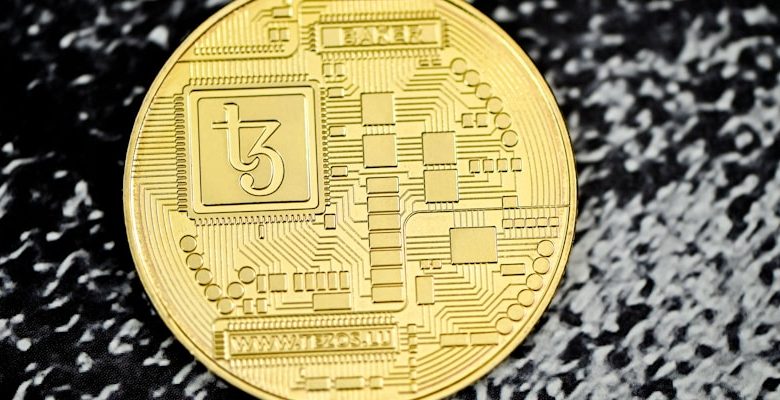How Blockchain is Enabling Micropayments

- Understanding the concept of micropayments
- The role of blockchain technology in facilitating micropayments
- Benefits of using blockchain for micropayments
- Challenges and limitations of implementing micropayments with blockchain
- Real-world applications of blockchain-enabled micropayments
- Future trends and advancements in micropayments through blockchain
Understanding the concept of micropayments
Micropayments refer to small transactions where users pay a minimal amount for a particular service or content. This concept has gained popularity in the digital world, especially with the rise of blockchain technology. With blockchain, micropayments can be processed quickly and securely without the need for intermediaries like banks or payment processors.
One of the key benefits of micropayments is that they enable new business models that were previously not feasible. Content creators, for example, can now monetize their work by charging a small fee for each view or download. This opens up opportunities for artists, writers, and other creatives to earn income directly from their audience.
Moreover, micropayments can also be used for machine-to-machine transactions in the Internet of Things (IoT) ecosystem. Devices can pay each other for the data or services they provide, creating a more autonomous and efficient network. This can lead to innovative applications in areas such as smart cities, healthcare, and supply chain management.
Overall, understanding the concept of micropayments is crucial for grasping the potential of blockchain technology. By simplifying and streamlining small transactions, blockchain is paving the way for a more decentralized and inclusive economy. As more industries adopt this technology, micropayments are expected to play a significant role in reshaping the digital landscape.
The role of blockchain technology in facilitating micropayments
The integration of blockchain technology has played a crucial role in enabling the facilitation of micropayments. This innovative technology allows for secure and transparent transactions to occur seamlessly, making it ideal for processing small payments. By utilizing blockchain, users can send and receive funds quickly and efficiently without the need for intermediaries.
One of the key advantages of blockchain technology in facilitating micropayments is its ability to reduce transaction fees significantly. Traditional payment methods often incur high fees, making it impractical for small transactions. With blockchain, transactions can be processed at a fraction of the cost, making micropayments more feasible.
Furthermore, blockchain technology provides a level of security that is unmatched by traditional payment systems. Each transaction is verified and recorded on a decentralized ledger, making it virtually impossible to alter or manipulate. This transparency and immutability ensure that micropayments are conducted with trust and integrity.
Overall, the role of blockchain technology in facilitating micropayments is paramount in revolutionizing the way small transactions are conducted. Its efficiency, low costs, and security features make it an ideal solution for enabling seamless micropayments in various industries.
Benefits of using blockchain for micropayments
One of the key benefits of utilizing blockchain technology for micropayments is the enhanced security it provides. Due to its decentralized nature, blockchain ensures that transactions are securely recorded and cannot be altered or tampered with. This level of security instills trust among users, making them more comfortable with making frequent small payments.
Another advantage of using blockchain for micropayments is the reduced transaction costs. Traditional payment methods often involve high fees, especially for small transactions. With blockchain, these fees are significantly lower, making it more cost-effective for both users and businesses to process micropayments.
Blockchain also offers increased transparency and traceability for micropayments. Every transaction is recorded on a public ledger, allowing users to track their payments in real-time. This transparency helps to prevent fraud and ensures that all transactions are legitimate.
Furthermore, blockchain enables faster payment processing times for micropayments. With traditional payment methods, transactions can take days to be completed. However, blockchain technology allows for near-instantaneous transactions, making it ideal for micropayments that require quick and efficient processing.
Challenges and limitations of implementing micropayments with blockchain
Implementing micropayments using blockchain technology poses several challenges and limitations that need to be addressed for widespread adoption. One major obstacle is the scalability issue faced by many blockchain networks. The current transaction processing speed of most blockchains is relatively slow compared to traditional payment systems, which can hinder the efficiency of micropayments. This means that as the number of transactions increases, the network may become congested, leading to delays and higher transaction fees.
Another challenge is the cost associated with each transaction. While micropayments are by definition small in value, the fees associated with processing transactions on the blockchain can sometimes outweigh the value of the payment itself. This makes it economically unfeasible for users to make frequent micropayments, especially for low-value digital goods or services.
Moreover, the issue of user experience cannot be overlooked. Many blockchain platforms require users to manage their own private keys and wallets, which can be daunting for non-technical users. This complexity can act as a barrier to entry for mainstream adoption of micropayments using blockchain technology.
Real-world applications of blockchain-enabled micropayments
Blockchain technology has revolutionized the way micropayments are processed and has opened up a world of possibilities for real-world applications. Some of the key areas where blockchain-enabled micropayments are making a significant impact include:
- Content monetization: Content creators can now receive payments directly from consumers for accessing their content, bypassing the need for intermediaries.
- Internet of Things (IoT): Devices connected to the internet can now autonomously transact with each other using micropayments, enabling new business models and services.
- Online gaming: In-game purchases and rewards can be facilitated seamlessly using blockchain-enabled micropayments, enhancing the gaming experience for players.
- Cross-border transactions: Blockchain enables fast and cost-effective cross-border micropayments, reducing the need for traditional financial institutions.
- Reward systems: Companies can incentivize customer loyalty and engagement by offering micropayments for completing tasks or participating in surveys.
Overall, blockchain-enabled micropayments are transforming various industries by providing a secure, transparent, and efficient way to exchange value in small increments. As the technology continues to evolve, we can expect to see even more innovative applications emerge in the future.
Future trends and advancements in micropayments through blockchain
One of the key future trends in micropayments through blockchain is the increasing adoption of smart contracts. Smart contracts are self-executing contracts with the terms of the agreement between buyer and seller directly written into lines of code. This eliminates the need for intermediaries and streamlines the payment process, making micropayments faster and more secure.
Another advancement on the horizon is the integration of artificial intelligence (AI) with blockchain technology to enhance micropayment systems. AI can help optimize transaction processes, detect fraud, and personalize user experiences, ultimately improving the efficiency and effectiveness of micropayments.
Furthermore, the development of scalable blockchain solutions will enable more widespread use of micropayments. Current blockchain networks, such as Bitcoin and Ethereum, are limited in their transaction processing capabilities, leading to high fees and slow transaction times. Scalable blockchain solutions aim to address these issues, making micropayments more feasible on a larger scale.



